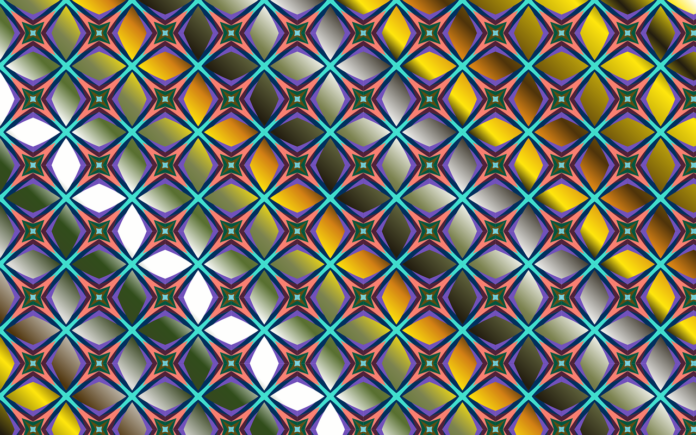Quantum Key Distribution (QKD) is a revolutionary cryptographic technique that exploits the principles of quantum mechanics to securely distribute cryptographic keys between two parties. It provides a method for generating and sharing keys that are fundamentally secure against eavesdropping attempts, even with the advent of powerful quantum computers. QKD leverages the quantum properties of particles, such as photons, to establish a secret key between two users, enabling secure communication over a potentially insecure channel.
The fundamental principle behind Quantum Key Distribution involves the use of quantum properties to establish a shared secret key between two parties, usually referred to as Alice and Bob. In a typical QKD protocol, Alice transmits a series of quantum particles (usually photons) to Bob, encoding the information using quantum states. These quantum states serve as the carriers of information and form the basis of the key generation process. When these quantum particles reach Bob, he performs measurements, exploiting the unique properties of quantum mechanics, to decode the transmitted information. Through a secure classical communication channel, Alice and Bob can then compare and process the measurement outcomes to distill a secret key, ensuring the security of their communication.
The security of Quantum Key Distribution lies in the fundamental principles of quantum mechanics, such as the superposition principle and the no-cloning theorem. The superposition principle allows a quantum particle, like a photon, to exist in a combination of states simultaneously. This property enables the creation of complex quantum states that carry multiple bits of information. The no-cloning theorem asserts that it is impossible to create an exact copy of an arbitrary unknown quantum state, which is a pivotal aspect for secure key distribution in QKD. Any attempt to measure or copy a quantum state inevitably disturbs the state, revealing the eavesdropper’s presence in the communication.
In a typical QKD protocol like the BB84 protocol, Alice randomly encodes the bits of the secret key into different quantum states, often using one of two conjugate bases (e.g., rectilinear and diagonal) to represent binary values (0 and 1). The resulting quantum states are then transmitted to Bob. Due to the properties of quantum mechanics, an eavesdropper, often referred to as Eve, cannot make perfect copies of the transmitted states without revealing her presence. Eve’s attempt to intercept and measure the quantum states will necessarily disturb the states, introducing errors that can be detected by Alice and Bob during the key generation process.
One of the key QKD protocols is the BB84 protocol, proposed by Bennett and Brassard in 1984. In the BB84 protocol, Alice generates a random sequence of bits and encodes each bit using one of four possible quantum states, representing the two bases mentioned earlier. Alice then sends these quantum states to Bob over the quantum channel. Upon receiving the states, Bob randomly chooses one of the two bases to measure each incoming quantum state. After the measurements, Alice and Bob publicly communicate the bases they used for each quantum state. They discard the quantum states where they used different bases, and the remaining bits form the raw key. By further employing error correction and privacy amplification procedures, Alice and Bob can distill a shorter but secure secret key.
Overall, Quantum Key Distribution has shown immense promise in ensuring secure communication by leveraging the fascinating principles of quantum mechanics. Its ability to provide information-theoretic security against any computational power, including quantum computers, marks a significant milestone in the realm of cryptography and information security. As advancements in quantum technologies continue, QKD holds the potential to play a vital role in the future of secure communication and cryptography.
Quantum Key Distribution (QKD) continues to evolve and diversify, with researchers exploring various protocols and technologies to enhance its efficiency, reach, and applicability. One notable protocol is the E91 protocol, proposed by Ekert in 1991, which utilizes entangled particle pairs to establish a secure key. Entanglement is a remarkable quantum phenomenon where the properties of two or more particles become interconnected, and the state of one particle is dependent on the state of the other, regardless of the distance between them. In the E91 protocol, entangled particles are distributed to Alice and Bob, who then measure these particles in randomly chosen bases. The correlation of their measurement outcomes allows them to extract a secure key. The use of entangled particles significantly enhances the security of the key distribution process, as any attempt to intercept the entangled particles would disrupt their correlation, revealing the eavesdropper.
Another advancement in the field of QKD is the development of practical QKD systems capable of operating over real-world communication networks. Integrated quantum photonic technologies have made substantial progress, enabling the creation of QKD systems that can be deployed over optical fibers, free-space links, and even satellite-based communication channels. These advancements in hardware and infrastructure are crucial for the widespread adoption of QKD and its integration into existing communication networks. Additionally, researchers are exploring techniques to improve the key generation rates and transmission distances of QKD systems, addressing practical limitations and making QKD more practical for various applications.
The field of post-processing techniques in QKD is also an area of active research. Error correction and privacy amplification, essential components of key distillation, are continuously being refined to maximize the efficiency of extracting a secure key from the raw data. Additionally, advancements in error estimation methods are aiding in accurately assessing the security of the generated key, providing valuable insights into the overall security of the QKD protocol. These efforts contribute to the overall robustness and reliability of QKD, ensuring that the generated keys are indeed secure against potential eavesdropping attacks.
Looking ahead, the integration of QKD into existing cryptographic infrastructures is a significant goal. Hybrid approaches that combine classical cryptographic protocols with QKD can provide enhanced security and flexibility in various communication scenarios. Furthermore, research and development in quantum-resistant cryptography are ongoing to ensure long-term security against adversaries armed with powerful quantum computers, emphasizing the need for a holistic approach to information security that considers both quantum and classical cryptographic methods.
In conclusion, Quantum Key Distribution represents a transformative paradigm in cryptography, leveraging the principles of quantum mechanics to establish secure communication channels. The remarkable potential of QKD in ensuring information-theoretic security against quantum adversaries positions it as a crucial technology for the future of secure communication. Continued research and technological advancements in QKD are paving the way for its integration into mainstream communication systems, with the promise of revolutionizing data security on a global scale.














